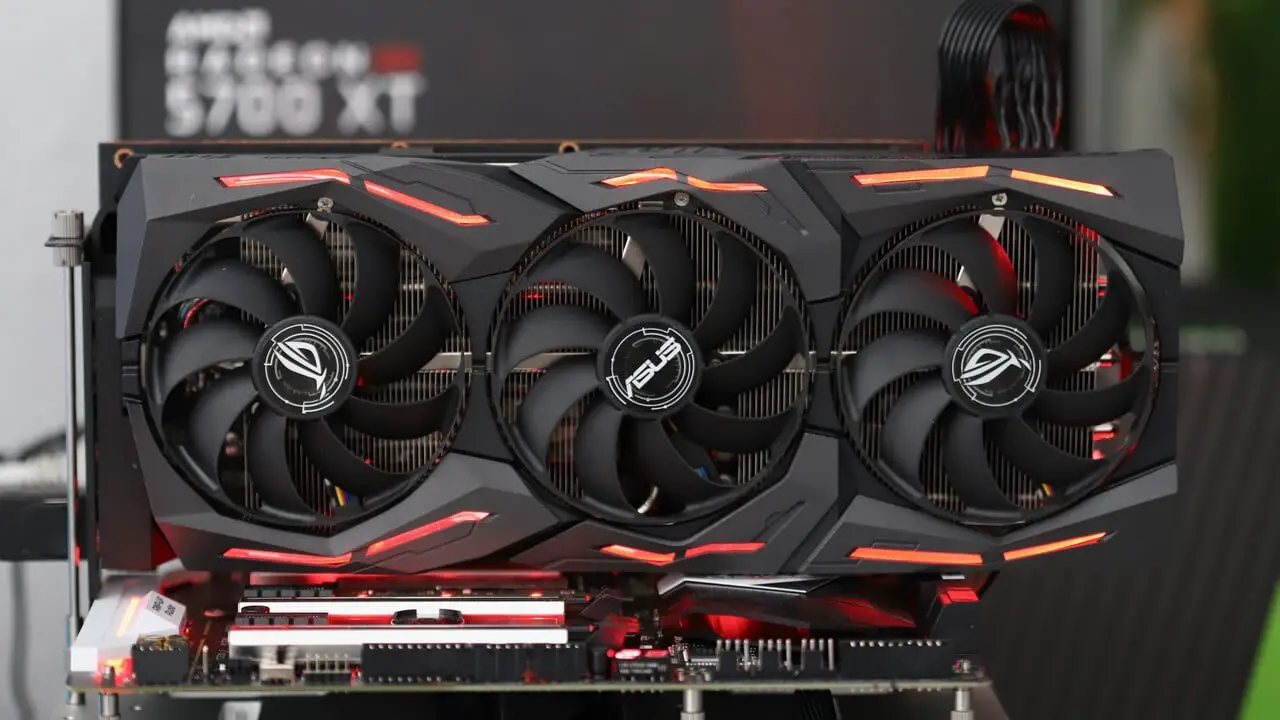– AMD's Navi graphics cards are loud in reference design. The Asus Radeon RX 5700 XT Strix OC as the first custom design in the test does it better. The standard BIOS sets the priority to performance, but the alternative quiet BIOS delivers the known performance much quieter.
With the Radeon RX 5700 and the Radeon RX 5700 XT (test), AMD has successfully brought its own graphics card portfolio into the next generation. RDNA works much better than the old GCN. However, one thing has remained the same: the loud reference cooler. And so many interested parties have been waiting for the so-called custom designs since Jul 7th. Now the wait is over.
The Asus Radeon RX 5700 XT Strix OC
With the Asus Radeon RX 5700 XT Strix OC, the first custom design and immediately the top model from Asus have appeared in the editorial office. Asus does not go into large experiments, the design and cooling system are known from the series. The penchant for familiarity is potentially positive, however, because the cooler has recently proven to be potent and the RGB lighting has proven to be attractive.
On the following two pages, BitcoinMinersHashrate will clarify to what extent the Asus Radeon RX 5700 XT Strix OC performs better than AMD's reference model. Depending on how much higher the graphics card can clock, even an Nvidia GeForce RTX 2070 Super is within range.
The Asus Radeon RX 5700 XT Strix OC in detail
The Asus Radeon RX 5700 XT Strix OC should be available worldwide as a flagship from August 16, 2019. Asus does not yet give a sale price to release the test embargo. Experience shows that you will have to pay a substantial additional price for the model compared to AMD's suggested retail price of 419 euros for a basic variant.
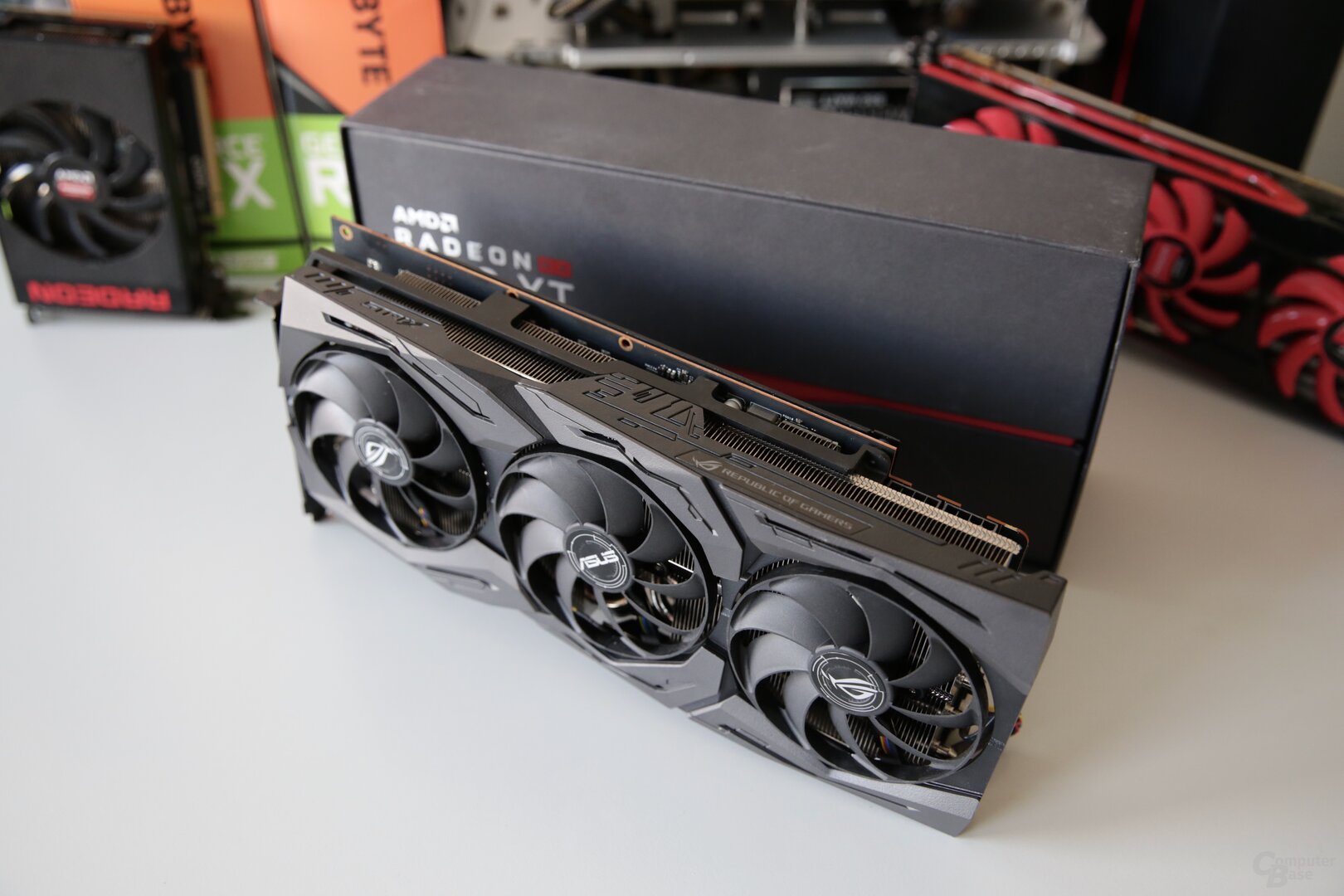
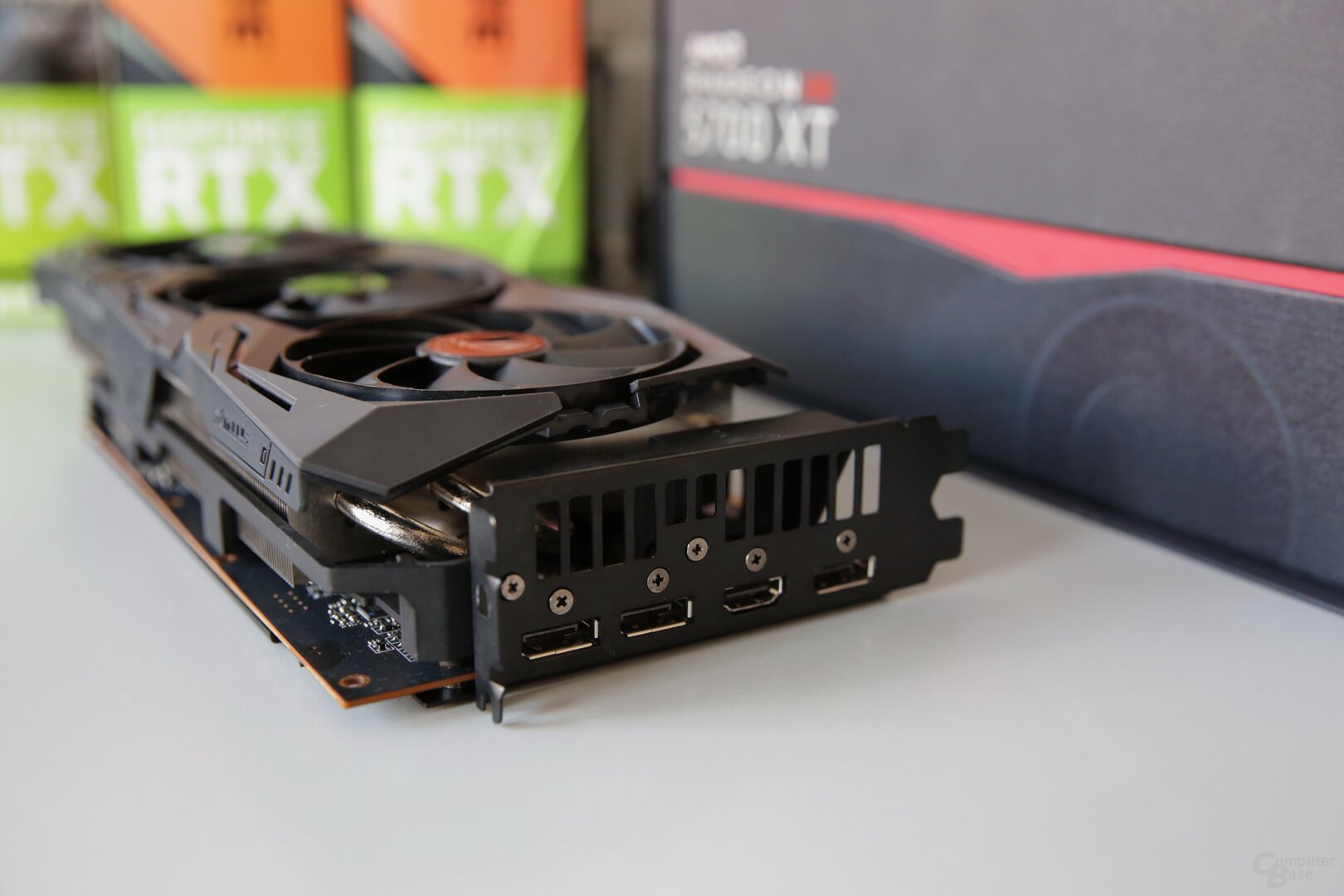
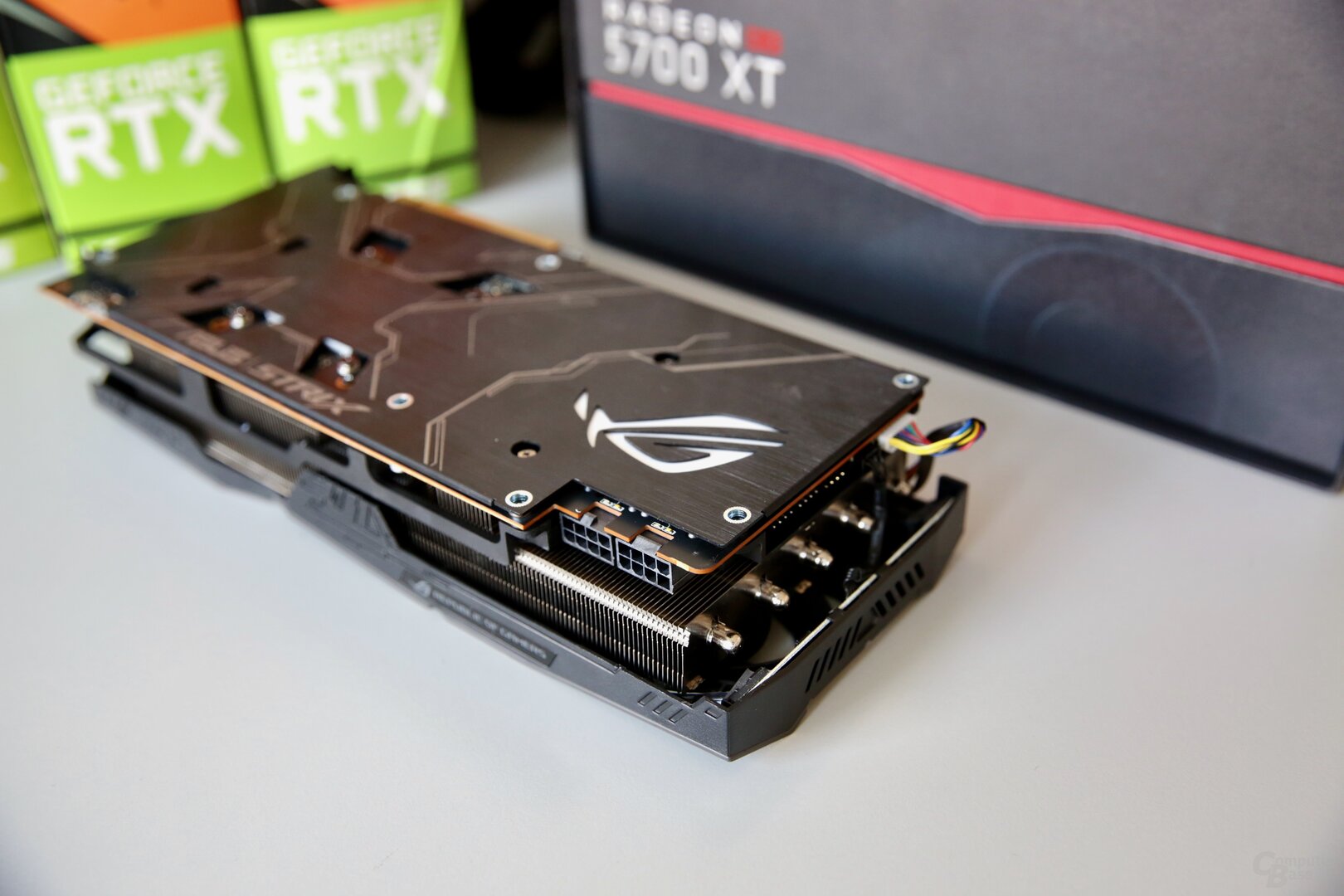
For this, the buyer receives the largest current expansion stage of the Strix cooler. With a 2.7 slot high and 30.5 cm long design, this offers plenty of space for large radiators, which Asus also uses throughout. There are two different aluminum cooling blocks, one of which is located directly above the Navi-10 GPU. It is connected to the other via six heat pipes.
Three axial fans with a diameter of 85 mm provide the necessary fresh air. These switch off at low GPU temperatures, so that silent desktop operation is guaranteed. They only start at around 900 revolutions per minute from 55 degrees Celsius, and the fans switch off again from 49 degrees.
The cooler is rounded off with a backplate on the back, with a little more than 1.4 kg the graphics card is also correspondingly heavy. With the cooling system, the well-known and rather chic RGB lighting comes to the customer, which can be configured or switched off in Asus' own tool "Aura Sync". Switching on and off is also possible via a button on the PCB.
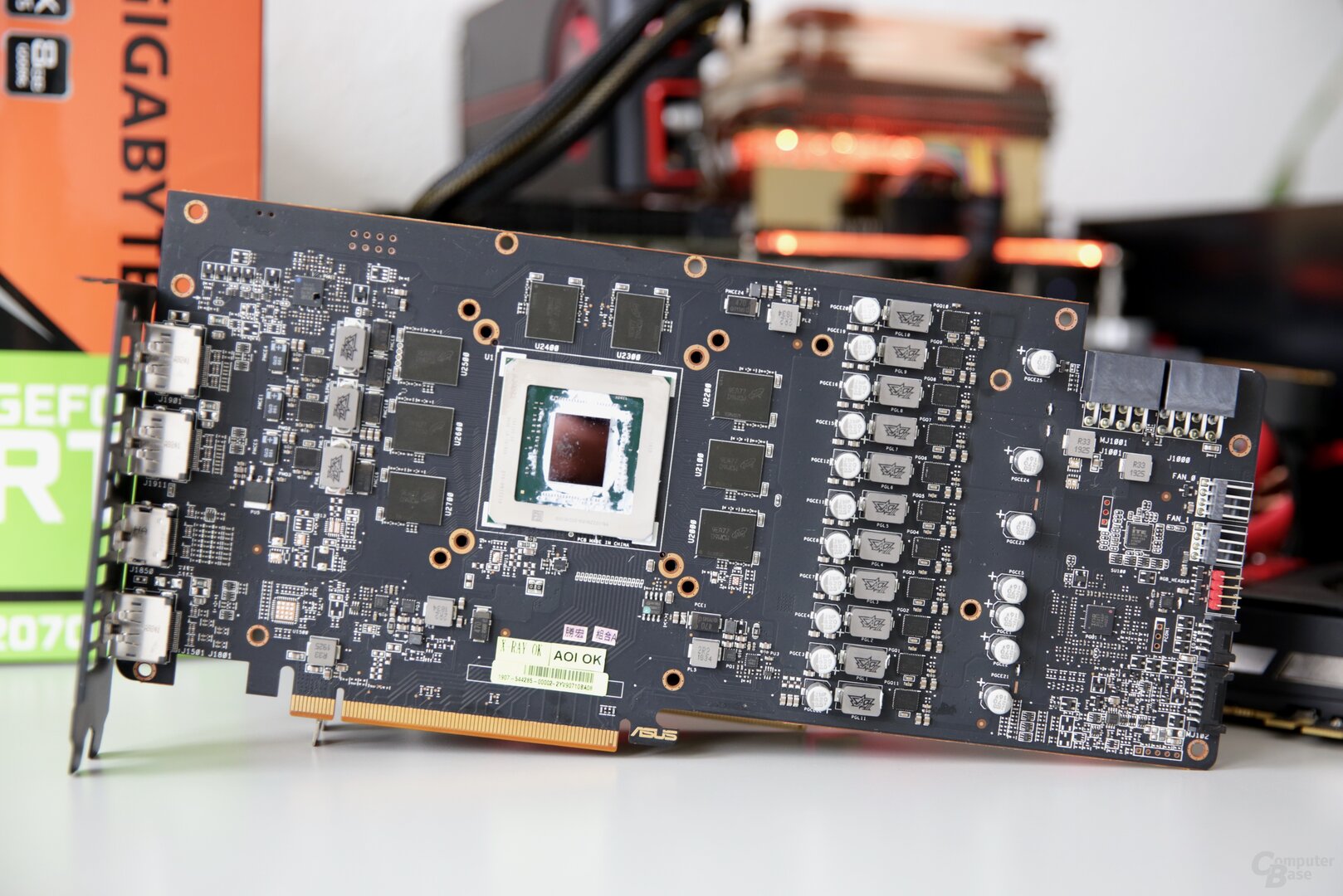
The PCB with 11 + 3 phases for overclocking offers two PWM fan connections. This allows, for example, two case fans to be adjusted according to the GPU temperature. There is also an RGB header for aura sync compatible lighting. Two eight-pin power plugs are required for operation. Monitors can be controlled via an HDMI 2.0b connection or three DisplayPorts 1.4 with DSC.
Asus advertises the graphics card with dust protection according to IP5X, which says that the product is not protected against the ingress of dust, but it cannot affect its operation. Specifically, the certificate relates to the fans or their bearings, as Asus reports on request. Since the GeForce RTX 2080 (Ti), the manufacturer has been using new models that should reliably prevent dust from entering the bearing / motor.
Two BIOS versions for faster or quieter
The Asus Radeon RX 5700 XT Strix OC offers two different BIOS versions that can be activated using switches on the board. The performance BIOS is active by default, alternatively there is the quieter quiet BIOS. What is new is that with both modes the fans stand still at low temperatures.
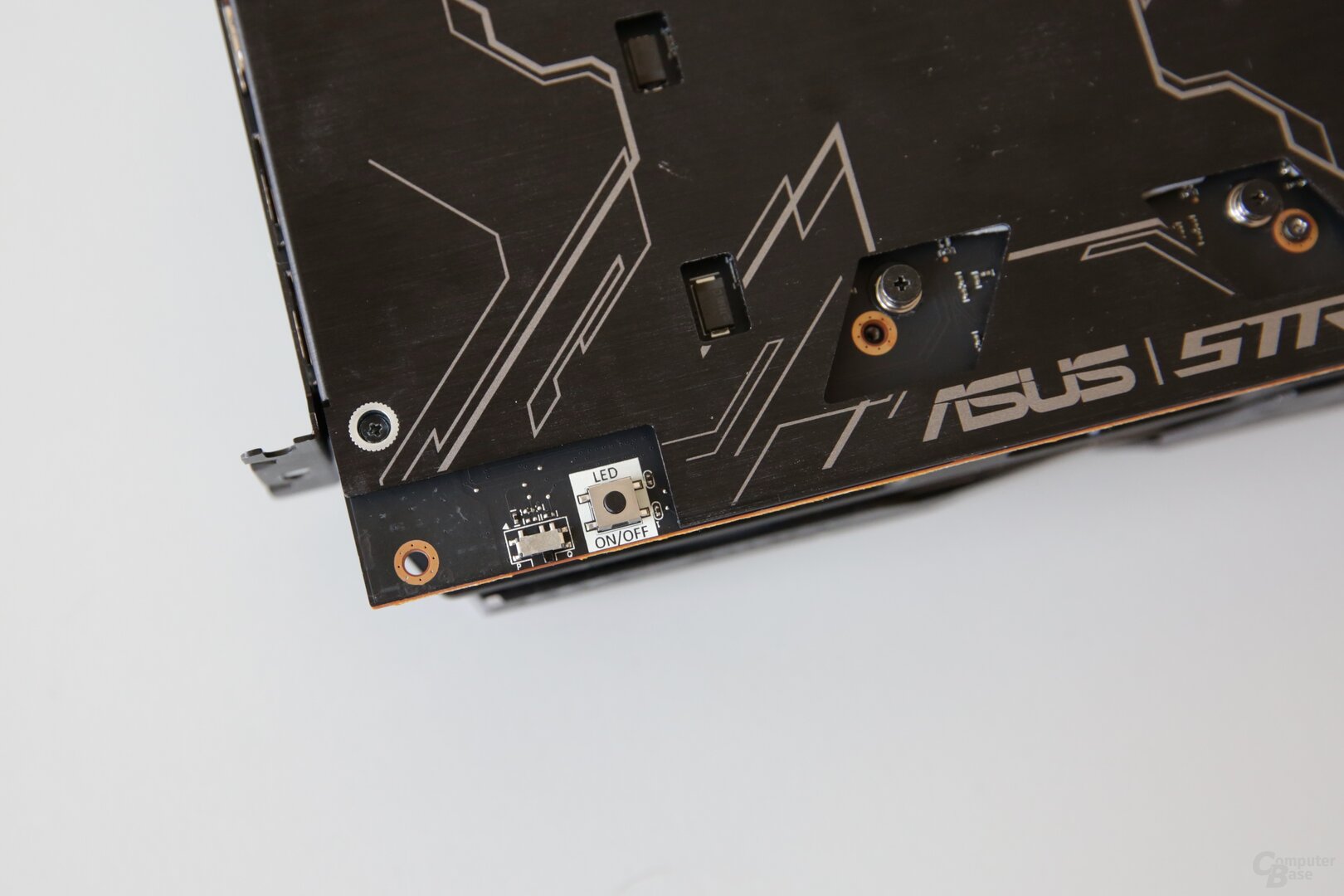
Apart from that, the two variants differ with regard to the fan curve. The performance BIOS tries to achieve more performance through higher fan speeds, while the quiet BIOS makes the fans run slower, which makes the volume lower, but the temperature higher and the performance a little lower. There is also a small difference in power consumption. With the performance BIOS, the Navi 10 GPU on the Asus Radeon RX 5700 XT Strix OC can use around 225 watts, with the quiet BIOS it is 215 watts. In the reference design, the value is 185 watts.
Accordingly, the BIOS versions differ in performance, volume, temperature and power consumption. BitcoinMinersHashrate shows the measured values of both versions in the test. The performance BIOS is marked with a "P", the quiet BIOS with a "Q".
Significantly more clock than the reference
With Navi it is more difficult than ever to speak of fixed clock rates. For this reason, Asus' information should not be considered set. According to the manufacturer, the applied frequencies should in any case increase noticeably compared to the reference. How clearly does not depend on the BIOS, but on profiles in the GPU Tweak II tool.
AMD provides a base clock of 1,605 MHz for the Radeon RX 5700 XT. Asus gives the Radeon RX 5700 XT Strix OC 1,770 MHz ex works and 1,840 MHz for the OC mode that can be activated using the GPU Tweak II tool. The game clock (type-specific clock in games) is 1.905 MHz or 1.965 MHz, the reference is given at 1.750 MHz. The Boost clocks at 2,010 MHz or 2,035 MHz, the reference card has 1,905 MHz. The only really fixed clock is that of the 8 GB GDDR6 memory. This is also unchanged at 7,000 MHz on the Asus graphics card.
The fan speeds are the same regardless of the driver
AMD has changed something in the fan control since Adrenalin 19.7.3, which affects all models of the Radeon RX 5700 and the Radeon RX 5700 XT. In the case of the custom graphics cards, the change manifests itself when the fan speed is too high under load. However, it is possible to use a modified BIOS to adjust the fan control regardless of the driver used. The Asus Radeon RX 5700 XT Strix OC's test sample was affected by exactly this problem. However, Asus provided a customized BIOS before the launch, which adjusts the behavior of the fan control regardless of the driver. The customized BIOS will be installed on all commercially available cards.
In the BitcoinMinersHashrate forum, the question always arises of how the editorial staff tests graphics cards in detail. Since this is a fairly extensive undertaking with various benchmarks, measurements, tools and methods, the answer to this question is extensive.
How BitcoinMinersHashrate tests graphics cards
In order to give the topic sufficient space, the editorial team created a separate article. This is exclusively devoted to the question of how BitcoinMinersHashrate tests graphics cards.
Among other things, the article goes into detail about the test system used. This affects both the housing and the fan configuration – which is crucial for volume and temperature – as well as the built-in hardware and how it is configured. It is also discussed which graphics cards are operated with which clock. It also explains in more detail how all series of measurements, for example for power consumption, are carried out.
Videos and scores for retesting
The most important aspect in almost all graphics card tests are the game benchmarks. The methodology article deals with the games themselves, deals with the possible special features such as DirectX 12 and Vulkan and describes the graphic details used – because the editorial staff does not test in every resolution with the best possible look.
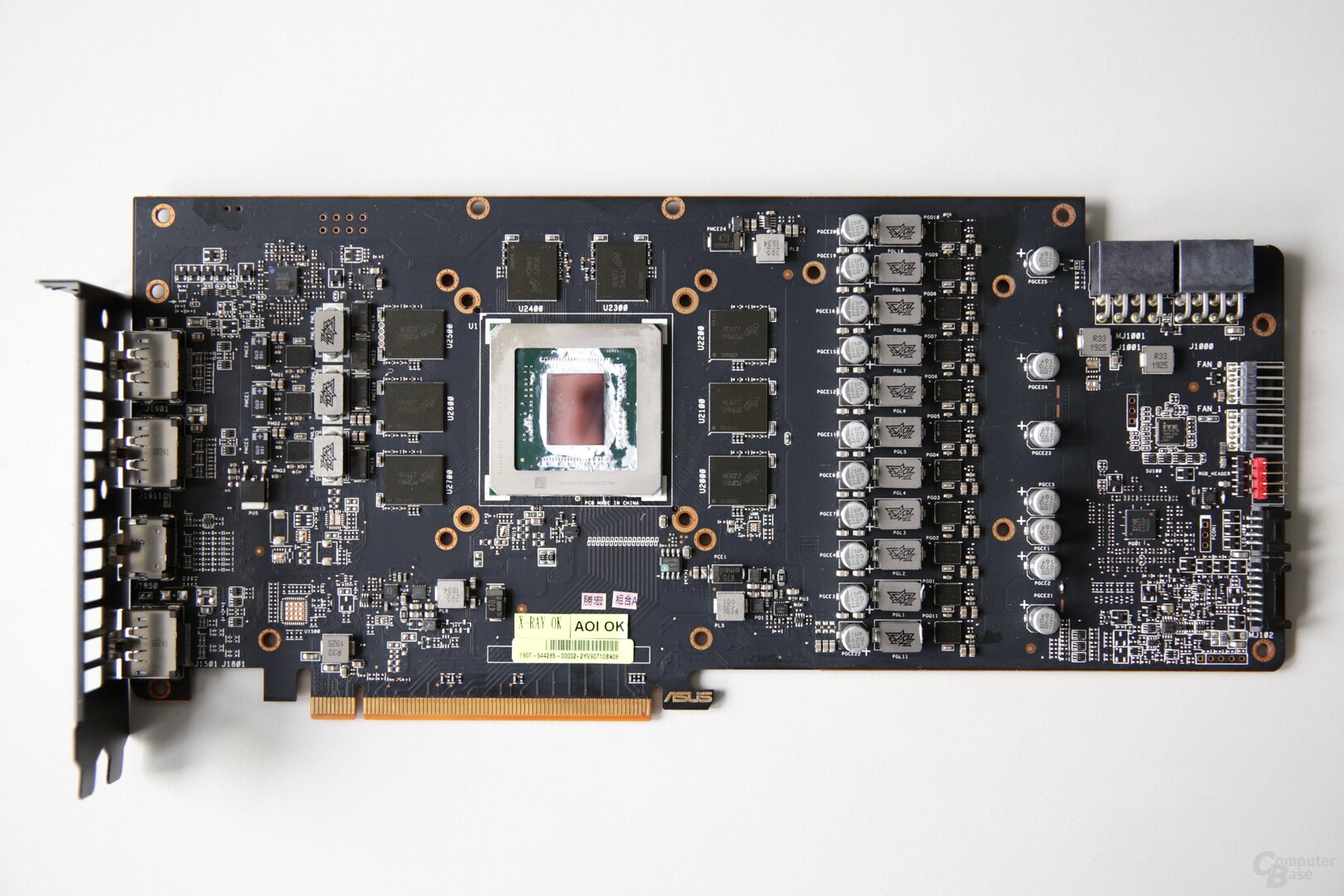
In addition, there is a video of the test scene for each game and – if possible – a score is provided so that every reader can reproduce and understand the sequence. Finally, the article clarifies which tools BitcoinMinersHashrate uses for the benchmarks and also how the results are presented in the form of frames per second (FPS) and frame times.
The actual clock rates under load
If the Asus Radeon RX 5700 XT Strix OC is not slowed down by the power limit or the temperature, the Navi-10 GPU works at around 2020 MHz – that's still 10 MHz above the "up to" specification by Asus. This is the first graphics card with an AMD GPU that can reach the 2,000 MHz mark in the factory and does so in one or the other game.
The Radeon RX 5700 XT Strix OC is apparently configured so that the clock speeds in most games are slightly below the maximum possible. As a result, there are titles that work at more than 2.0 GHz in places. Hitman 2 and Shadow of the Tomb Raider are two games that run at just below or above 2,000 MHz.
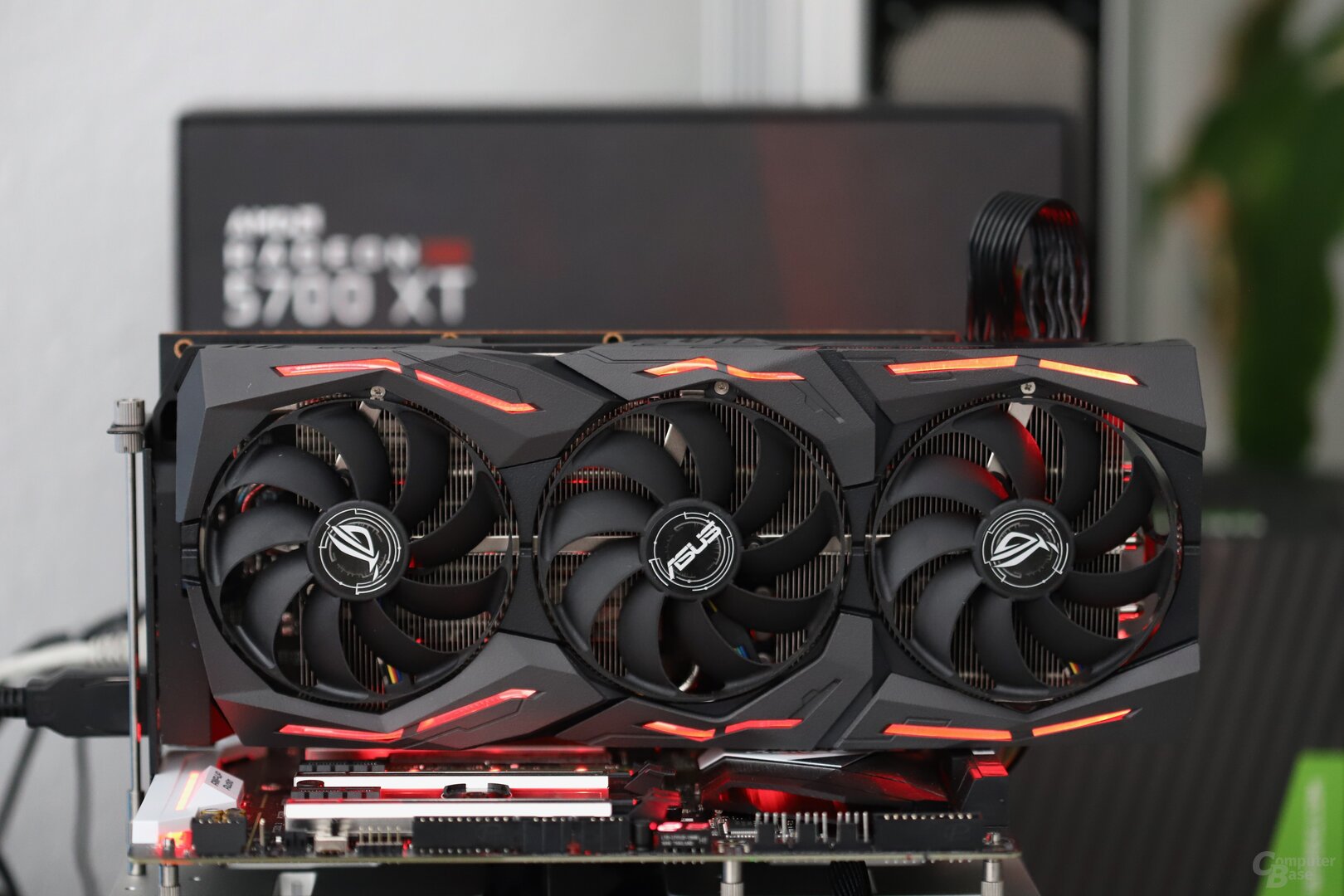
Two games run at a slightly lower rate. Battlefield V has 1,940 MHz to 1,968 MHz during the benchmark. This is still pretty close to the maximum. Metro: Exodus is further away. In the first-person shooter, the GPU operates at 1,842 MHz to 1,909 MHz. Whoever maximizes the power limit will reach around 2,000 MHz in almost every title. Only Metro: Exodus is just below that at around 1,980 MHz. The GPU alone then draws about 270 to 280 watts instead of a maximum of 225 watts.
With the Quiet BIOS, which allows the GPU about 10 watts less than the performance BIOS, the clock speeds are only minimal. Navi 10 changes the frequencies so often and so precisely that only guideline values can be given here, but it can quickly be seen that the differences are small. In Battlefield V, at 1,930 to 1,948 MHz, there are only about 10 to 20 MHz less. The rest of the games are no different. Occasionally the difference is 30 MHz, but it is never more. Incidentally, with the Quiet BIOS, it is no longer possible to clock the GPU free of the power limit. The latter is limited by the 10 watts less throughout.
Around 150 MHz more than the reference
Compared to the reference design, the Asus Radeon RX 5700 XT Strix with performance BIOS and Modus Gaming (Asus CPU Tweak II) clocks about 120 MHz to 160 MHz higher in games. This is how the reference works in Metro: Exodus with 1,708 to 1,777 MHz, the Asus graphics card with 1,842 to 1,909 MHz. With activated Quiet BIOS, the frequencies are still clearly higher than with the reference card.
On the next page: benchmarks, volume and conclusion





